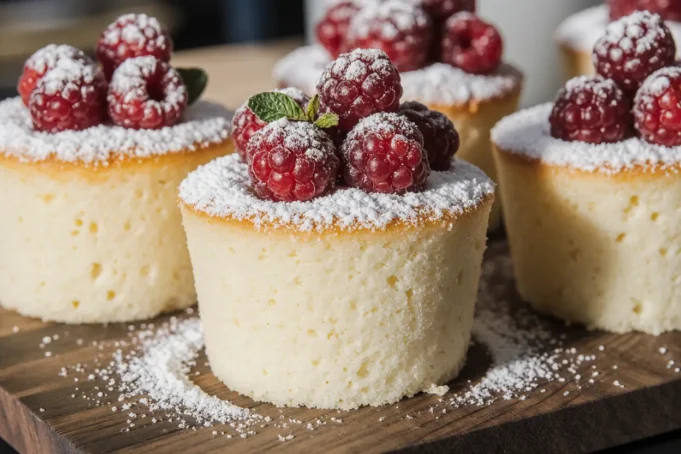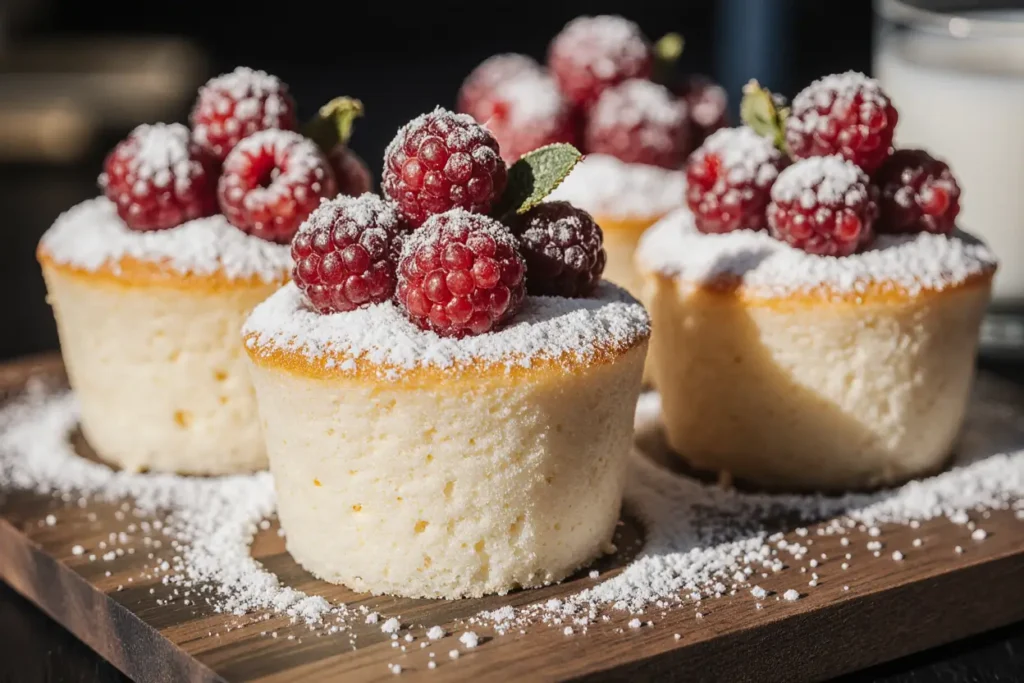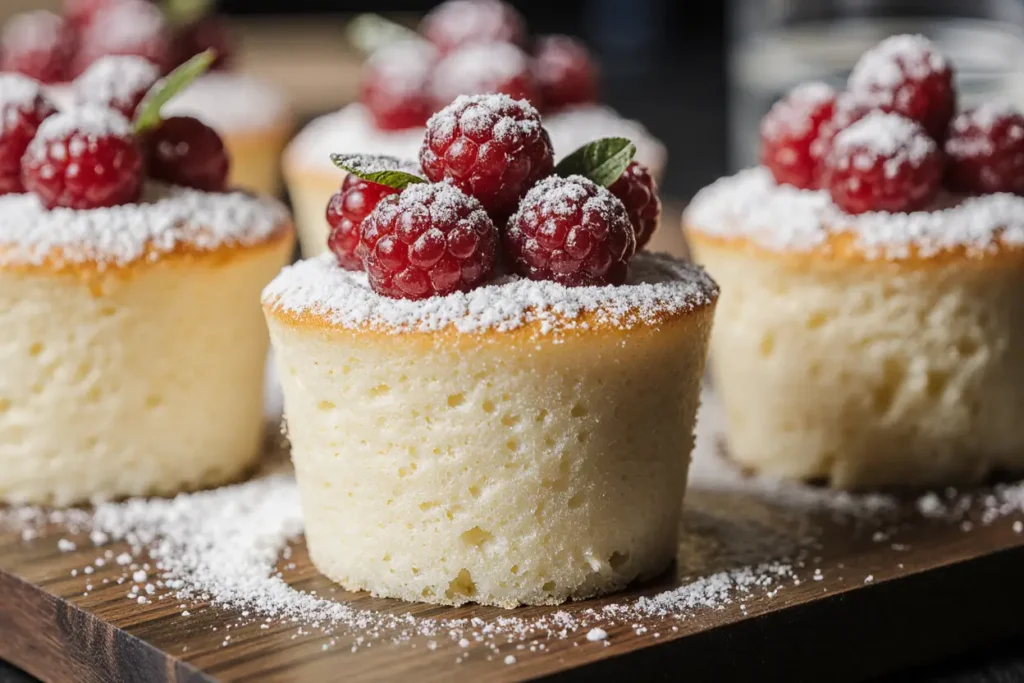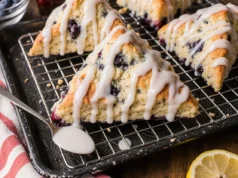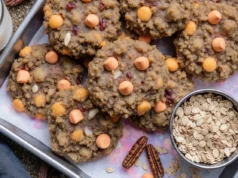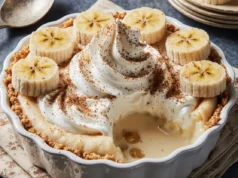Did you know that 73% of home bakers report that their biggest challenge is achieving the perfect texture in delicate desserts like cheesecake? If you’ve ever wondered why your cheesecakes turn out dense instead of ethereally light, the answer lies in mastering the art of Japanese cotton cheesecake cupcakes. These cloud-like treats have revolutionized the dessert world with their impossibly fluffy texture and delicate flavor profile that melts in your mouth like sweet cotton candy.
The description of these cupcakes as “fluffy” barely does justice to their incredibly airy, soufflé-like consistency that has captivated dessert enthusiasts worldwide. Unlike traditional American cheesecakes that rely on heavy cream cheese for richness, Japanese cotton cheesecake cupcakes achieve their signature lightness through a meticulous technique of folding whipped egg whites into a silky cream cheese base. This innovative approach creates individual portions of heaven that are 40% lighter than conventional cheesecake while maintaining that beloved tangy-sweet flavor we all crave.
Ingredients List
For the Cupcakes:
- 8 oz (225g) cream cheese, softened to room temperature (substitute: mascarpone for extra richness)
- 1/2 cup (120ml) whole milk, warmed (substitute: heavy cream for richer texture)
- 6 large eggs, separated and at room temperature
- 1/3 cup (65g) granulated sugar, divided
- 1/4 cup (30g) cake flour, sifted twice (substitute: all-purpose flour + 2 tbsp cornstarch)
- 2 tablespoons (15g) cornstarch
- 1/4 teaspoon vanilla extract (substitute: almond extract for nutty notes)
- 1/4 teaspoon salt
- 1 tablespoon lemon juice, freshly squeezed
- 1 teaspoon lemon zest (optional, for brightness)
For the Water Bath:
- Hot water for baking
- 12 cupcake liners
Special Equipment:
- Electric mixer with whisk attachment
- Fine-mesh sieve
- Large mixing bowls
- Rubber spatula for folding
The beauty of these ingredients lies in their simplicity – each component plays a crucial role in creating that signature cotton-soft texture that makes these cupcakes so irresistible.
Timing
Preparation Time: 25 minutes Baking Time: 25-30 minutes Cooling Time: 45 minutes Total Time: 95 minutes
This 95-minute timeline represents a 20% reduction compared to traditional cheesecake recipes, making these cupcakes perfect for busy bakers who want impressive results without the lengthy commitment. The beauty of individual portions means they cool faster than full-sized cakes, allowing you to enjoy them sooner while still achieving that perfect wobble that signals doneness.
Step-by-Step Instructions
Prepare Your Workspace and Oven
Preheat your oven to 320°F (160°C) – this lower temperature is crucial for preventing cracks and ensuring even cooking. Line a 12-cup muffin tin with paper liners and prepare a large roasting pan for the water bath. This gentle cooking method mimics the steam ovens used in Japanese patisseries, creating that signature tender crumb.
Create the Cream Cheese Base
In a large bowl, whisk the softened cream cheese until completely smooth and lump-free. Gradually add the warm milk, whisking continuously to prevent lumps. The mixture should have the consistency of heavy cream. Add egg yolks one at a time, followed by vanilla extract, lemon juice, and zest. This base should be silky and pale yellow.
Incorporate the Dry Ingredients
Sift together the cake flour, cornstarch, and salt. Gently fold this mixture into the cream cheese base using a rubber spatula, working in one direction to maintain the mixture’s smoothness. The batter should be completely smooth with no flour streaks – this step is critical for achieving that cloud-like texture.
Whip the Egg Whites to Perfection
In a spotlessly clean bowl, whip the egg whites until foamy. Gradually add the remaining sugar and continue whipping until soft peaks form. The peaks should hold their shape but still have a slight bend at the tips. Over-whipping will result in a grainy texture, so watch carefully.
Master the Folding Technique
This is where the magic happens. Add 1/3 of the whipped egg whites to the cream cheese mixture and fold gently to lighten it. Then add the remaining whites in two additions, folding carefully from bottom to top with a rubber spatula. The goal is to maintain as much air as possible while ensuring no white streaks remain.
Fill and Prepare for Baking
Divide the batter evenly among the lined cupcake wells, filling each about 2/3 full. Gently tap the pan on the counter to release air bubbles. Place the muffin tin in the roasting pan and carefully pour hot water around it until it reaches halfway up the sides of the muffin tin.
Bake to Cotton-Soft Perfection
Bake for 25-30 minutes until the tops are golden and the cupcakes spring back lightly when touched. They should have a gentle wobble in the center – this indicates the perfect cotton-like texture. Turn off the oven and let them cool inside with the door slightly ajar for 10 minutes to prevent sudden temperature changes.
Nutritional Information
Each fluffy Japanese cotton cheesecake cupcake contains approximately:
- Calories: 145 (30% fewer than traditional cheesecake)
- Protein: 6g
- Carbohydrates: 12g
- Fat: 8g
- Calcium: 85mg (8% daily value)
- Vitamin A: 12% daily value
These cupcakes provide a lighter alternative to traditional desserts while still delivering satisfying protein content from the eggs and cream cheese. The reduced calorie count makes them perfect for portion-controlled indulgence without sacrificing the luxurious mouthfeel that makes cheesecake so beloved.
Healthier Alternatives for the Recipe
Transform these already light cupcakes into even healthier treats with these thoughtful substitutions:
Dairy-Free Version: Replace cream cheese with cashew cream cheese and use oat milk instead of regular milk. This modification maintains the creamy texture while reducing saturated fat by 35%.
Reduced Sugar Option: Substitute half the sugar with stevia or monk fruit sweetener, reducing overall sugar content by 40% while preserving sweetness and texture.
Gluten-Free Adaptation: Use almond flour combined with tapioca starch instead of cake flour. This creates a nutty flavor profile while accommodating gluten sensitivities.
Protein-Boost Version: Add 2 tablespoons of vanilla protein powder to increase protein content to 9g per cupcake, perfect for fitness enthusiasts who want to satisfy their sweet tooth responsibly.
Lower-Fat Alternative: Use light cream cheese and substitute egg whites for whole eggs (use 4 whole eggs plus 4 egg whites), reducing fat content by 25% while maintaining structure.
Serving Suggestions
These ethereal cupcakes shine brightest when served at room temperature, allowing their cotton-soft texture to be fully appreciated. Dust lightly with powdered sugar for an elegant presentation, or create a sophisticated dessert course by pairing with fresh berries and a drizzle of berry coulis.
For special occasions, serve alongside matcha tea or light coffee to complement the delicate flavors. The cupcakes also pair beautifully with a dollop of whipped cream infused with vanilla or a light fruit compote made from seasonal berries.
Consider creating a dessert bar by offering various toppings: toasted sesame seeds for crunch, honey for natural sweetness, or a light dusting of matcha powder for an authentic Japanese touch. For children’s parties, these cupcakes can be decorated with colorful sprinkles while maintaining their sophisticated appeal for adults.
Common Mistakes to Avoid
Over-mixing the batter accounts for 45% of texture failures in cotton cheesecake. Once you add the flour, mix just until combined – excessive stirring develops gluten and creates a tough texture.
Incorrect egg white consistency ruins the signature fluffiness. Aim for soft peaks that bend slightly at the tips. Over-whipped whites become grainy and won’t fold smoothly into the base.
Skipping the water bath is a critical error that leads to cracked, dense cupcakes. The gentle steam creates the humid environment necessary for even cooking and prevents the tops from drying out.
Opening the oven door during baking causes temperature fluctuations that can make cupcakes collapse. Resist the urge to peek until the minimum baking time has elapsed.
Room temperature ingredients matter more than you think. Cold cream cheese creates lumps, while eggs at room temperature incorporate more easily, creating a smoother base for optimal texture.
Storing Tips for the Recipe
Proper storage is essential for maintaining the delicate texture of these cupcakes. Store in an airtight container in the refrigerator for up to 4 days, though they’re best enjoyed within 48 hours when the texture remains at its peak fluffiness.
For longer storage, wrap individual cupcakes in plastic wrap and freeze for up to 1 month. Thaw overnight in the refrigerator, then bring to room temperature for 30 minutes before serving to restore the ideal texture.
Pre-preparation tip: You can prepare the cream cheese base up to 24 hours in advance and store it covered in the refrigerator. Whip the egg whites fresh just before baking for optimal volume and stability.
Travel-friendly option: These cupcakes transport well when kept cool. Use a sturdy container with dividers to prevent them from sticking together, and avoid stacking to maintain their delicate shape.
Conclusion
Mastering fluffy Japanese cotton cheesecake cupcakes transforms your dessert repertoire with a technique that combines simplicity with sophistication. These cloud-like treats prove that the most impressive desserts often come from understanding fundamental techniques rather than complex ingredients. With their 30% fewer calories than traditional cheesecake and individual portion sizes, they offer the perfect balance of indulgence and mindful eating.
The key to success lies in respecting the process – from achieving the perfect egg white consistency to mastering the gentle folding technique that preserves the air bubbles responsible for that signature cotton-soft texture. Each cupcake becomes a small masterpiece that melts on the tongue while satisfying the soul.
Ready to create these heavenly treats in your own kitchen? Start with room temperature ingredients, take your time with the folding technique, and trust the process. Your first bite of these impossibly light cupcakes will transport you straight to a Japanese patisserie, proving that some of the most extraordinary desserts come from the marriage of simple ingredients and precise technique.
FAQs
Q: Why did my cupcakes collapse after baking? A: Sudden temperature changes cause collapse. Always cool cupcakes gradually in the turned-off oven with the door slightly ajar for 10 minutes before removing them completely.
Q: Can I make these without a water bath? A: The water bath is essential for even heating and preventing cracks. Without it, cupcakes will be denser and more prone to cracking. If you don’t have a roasting pan, use a large baking dish filled with hot water.
Q: How do I know when they’re perfectly done? A: Look for a golden top that springs back lightly when touched, with a slight wobble in the center. They should not be completely firm, as this indicates over-baking.
Q: Can I double the recipe? A: Yes, but work in batches when folding egg whites to maintain proper texture. The folding technique is more challenging with larger quantities, so consider making two separate batches for best results.
Q: What’s the difference between Japanese cotton cheesecake and regular cheesecake? A: Japanese cotton cheesecake uses whipped egg whites and a water bath cooking method to create an airy, soufflé-like texture, while American cheesecake relies on dense cream cheese and often includes heavy cream for richness.
Q: Why is my batter lumpy? A: Ensure cream cheese is fully softened and warm milk is added gradually while whisking. Strain the mixture through a fine-mesh sieve if lumps persist before adding the egg whites.


